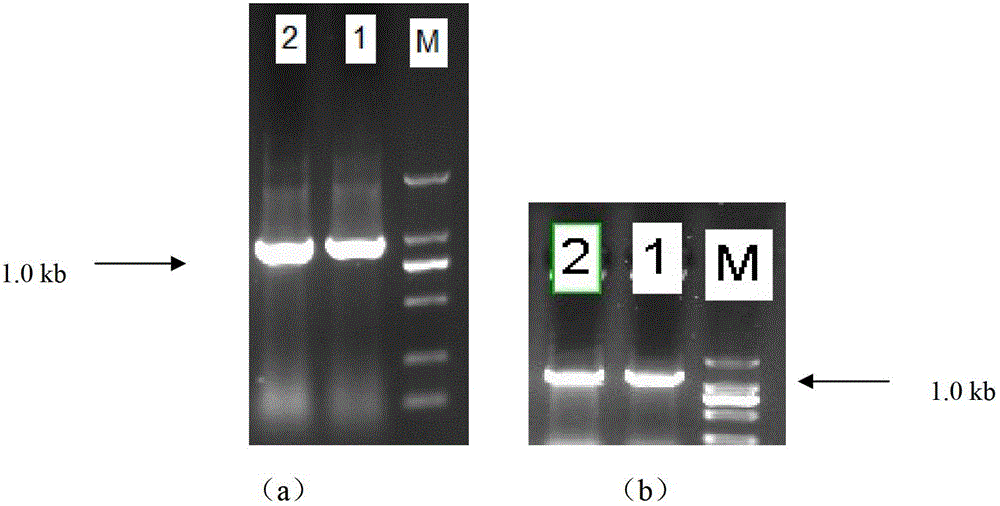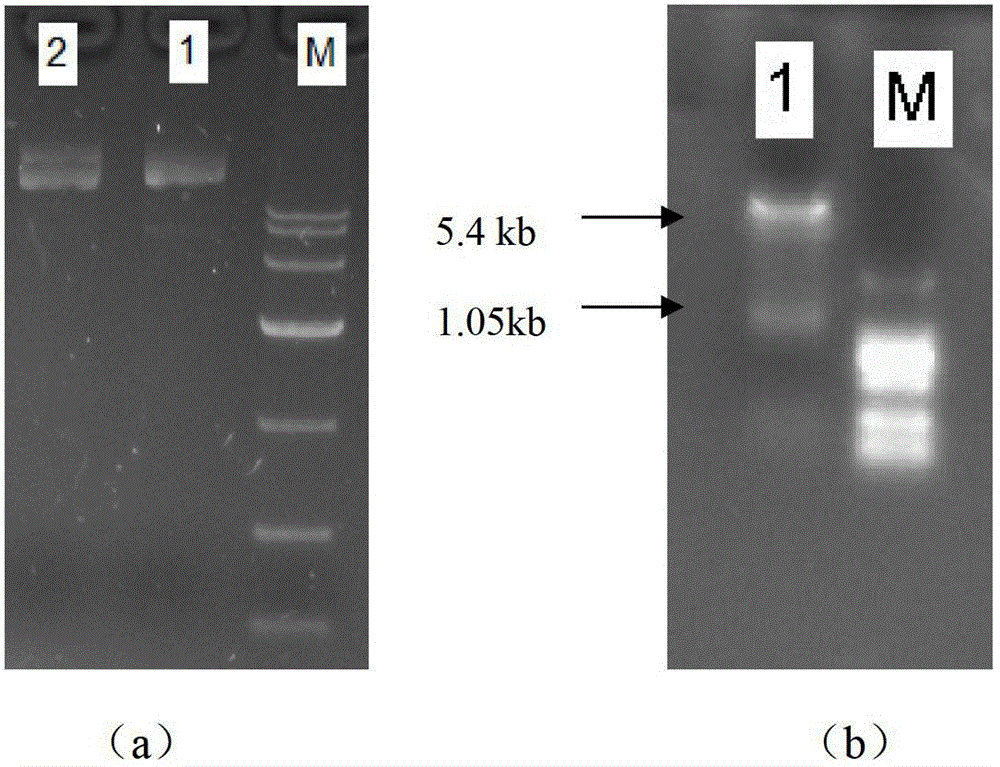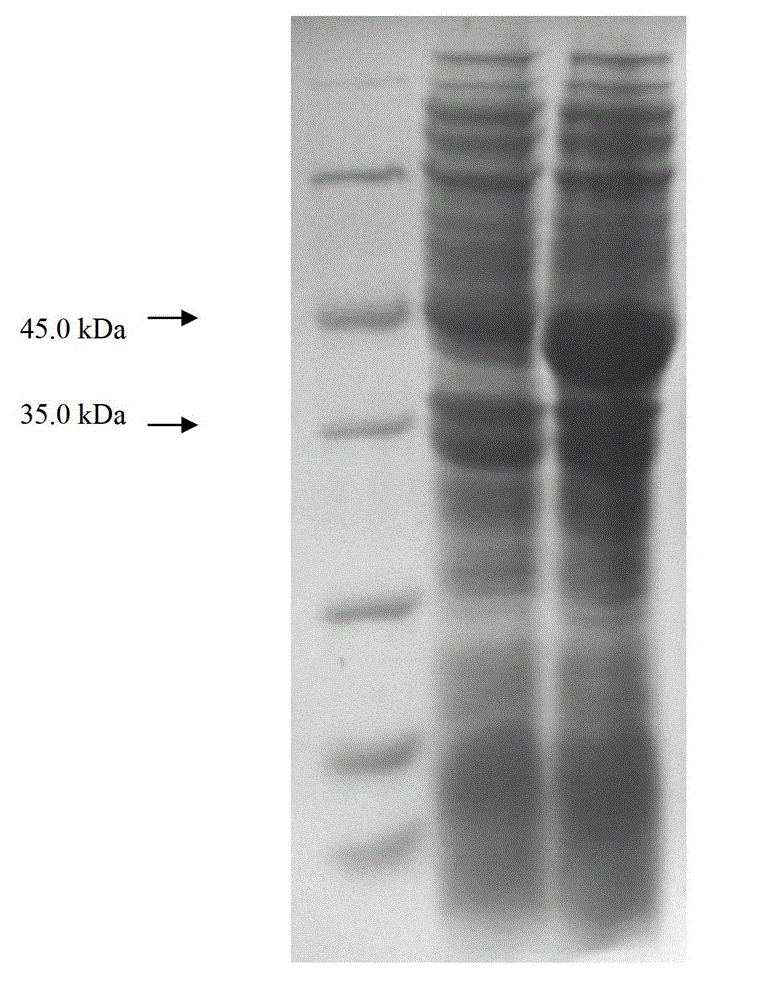Gene engineering bacterium for producing keratinase escherichia coli and application thereof
A technology of genetically engineered bacteria and keratinase, applied in bacteria, hydrolase, microorganism-based methods, etc., can solve the problems of easy loss, disappearance, and reduced protein expression.
- Summary
- Abstract
- Description
- Claims
- Application Information
AI Technical Summary
Problems solved by technology
Method used
Image
Examples
Embodiment 1
[0017] Construction and Identification of Embodiment 1 Recombinant Bacteria
[0018] 1) According to the gene sequence design on the NCBI website (GenBank: S78160.1), the primer sequences are as follows:
[0019] ker1-F: 5'-CATG CCATGG ATGCTCAGCCGGCGAAAAAT-3'
[0020] ker1-R: 5'-CGC CTCGAG TTATTGAGCGGCAGCTTCGA-3'
[0021] The keratinase gene was cloned using the genome of Bacillus licheniformis BBE1 (which has been deposited in the China Center for Type Culture Collection in the patent application of our unit with the patent number 201110343655.5, and the preservation number is CCTCC M 2011319) as a template.
[0022] PCR reaction system: Add the following reagents in sequence to a 0.2mL PCR tube: 5×prime STAR PCR buffer II (Mg 2+ plus) 5 μl; DNTP Mixture 4 μl; template DNA 1 μl; upstream and downstream primers 1 μl; Taq enzyme 0.5 μl; add double distilled water to a final volume of 50 μl. PCR amplification conditions: pre-denaturation at 94°C for 5min; denaturation at ...
Embodiment 2
[0027] Embodiment 2 fermentation produces keratinase
[0028] Medium: LB medium (1L) for seed and slant medium: tryptone 10g, yeast extract 5g, NaCl 10g, adjust pH to 7.0 with 1N NaOH; add agar 15g to slant medium; basic fermentation medium is TB Culture medium (1L): 900mL deionized water, 12g tryptone, 24g yeast extract, 10mL glycerol, autoclaved, cooled to 60°C, add 100mL sterilized potassium phosphate buffer;
[0029] Cultivation method: Cultivate to OD at 20°C and 200rpm 600 The seeds in 2.5 were transferred to the basic fermentation medium with an inoculum of 3%, and cultivated at 20°C and 200rpm;
[0030] Induction conditions: the induction OD value is 2.5, the recombinant bacteria are induced at 20° C. for 30 hours, and the IPTG concentration is 0.05 mM.
[0031] Using the empty vector as a control, a protein band with a molecular weight of about 37.5kDa was obtained by protein electrophoresis (SDS-PAGE) (see image 3 ), and the total enzyme activity of the recombina...
PUM
 Login to View More
Login to View More Abstract
Description
Claims
Application Information
 Login to View More
Login to View More - R&D
- Intellectual Property
- Life Sciences
- Materials
- Tech Scout
- Unparalleled Data Quality
- Higher Quality Content
- 60% Fewer Hallucinations
Browse by: Latest US Patents, China's latest patents, Technical Efficacy Thesaurus, Application Domain, Technology Topic, Popular Technical Reports.
© 2025 PatSnap. All rights reserved.Legal|Privacy policy|Modern Slavery Act Transparency Statement|Sitemap|About US| Contact US: help@patsnap.com



